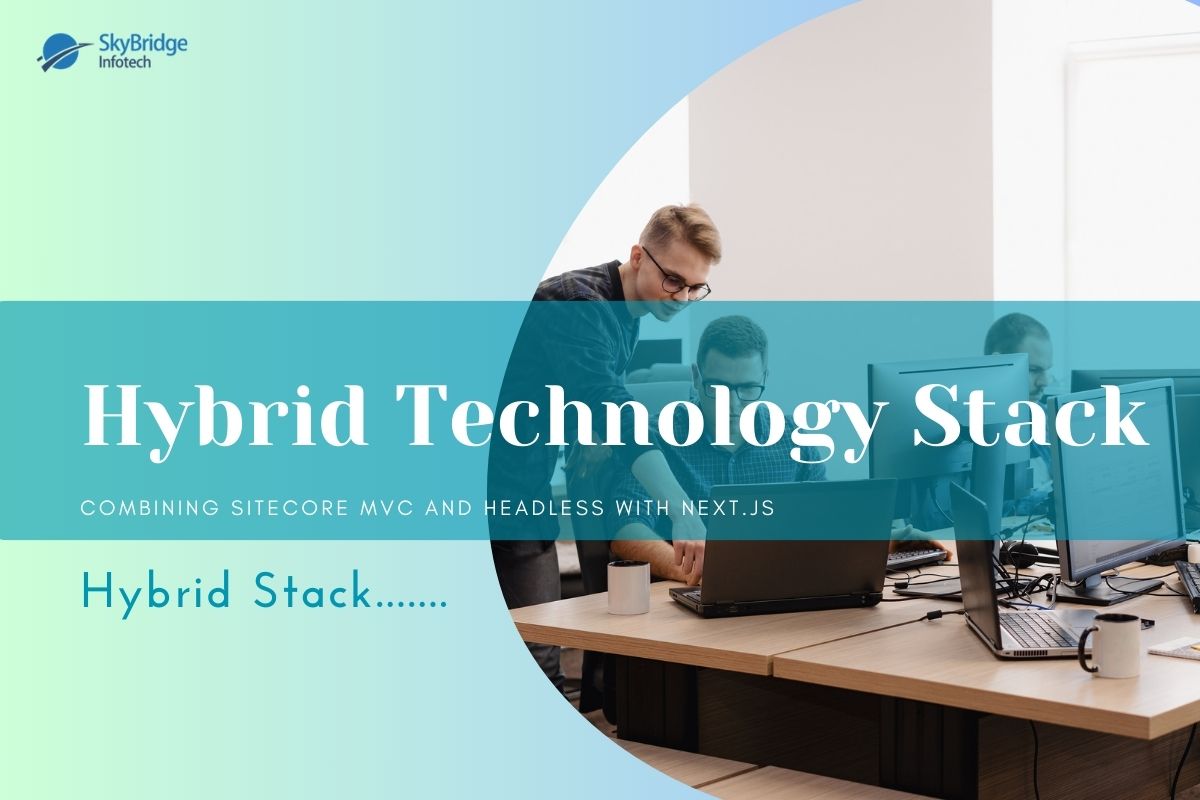Hybrid Technology Stack: Combining Sitecore MVC and Headless with Next.js
Combining Sitecore MVC and Headless with Next.js allows organizations to deliver rich, dynamic experiences across multiple digital platforms while maintaining a single source of truth for content in Sitecore. Incorporating Sitecore Experience Accelerator (SXA) for MVC sites in this hybrid stack can further accelerate development and significantly reduce time to market.
Let’s consider an example: you have thousands of content pages along with functional pages such as a customer portal, shopping, and forecasting tools. In this scenario:
- MVC + SXA efficiently handles the various content pages with minimal development effort.
- Headless with Next.js is ideal for managing functional pages that require enhanced interactivity and performance. Also, Sitecore APIs making it easier to deliver content across multiple platforms.
Overview of the Hybrid Stack
Sitecore MVC
- Traditional Rendering Model: Sitecore MVC is a server-side rendering approach, ideal for dynamic content, SEO optimization, and complex interactions.
- Use Cases: Great for content-heavy pages like blogs, product catalogs, and marketing campaigns.
Headless with Next.js
- Modern Decoupled Model: In the Headless CMS model, content is decoupled from the presentation layer. Sitecore Headless provides APIs to fetch content, which can then be rendered using modern frontend frameworks like Next.js.
- Use Cases: Best for functional pages requiring modern interactivity, performance optimizations, and multi-channel delivery (e.g., mobile apps).
Benefits of Combining MVC and Headless
1. Content Reusability
Using both MVC and Headless ensures the same content is shared across platforms like websites and mobile apps. For instance, a marketing campaign can be created in Sitecore and delivered seamlessly to both traditional MVC pages and mobile apps via APIs.
2. Flexible Presentation
- MVC: Provides server-side rendering (SSR) capabilities for SEO-optimized, dynamic pages.
- Headless (Next.js): Enables static site generation (SSG), incremental static regeneration (ISR), and advanced client-side interactions, offering performance and scalability.
3. Future-Proofing
A hybrid model allows teams to adopt modern technologies like Next.js while retaining the stability and features of Sitecore MVC, avoiding the need for a complete system rewrite.
4. Enhanced Performance
Next.js’s built-in optimizations (SSR, SSG, ISR) significantly boost front-end performance, especially when integrated with Sitecore APIs.
How to Implement the Hybrid Stack
1. Sitecore MVC for Traditional Sites
- Use Sitecore MVC for websites requiring server-side processing, dynamic data, or deep integration with Sitecore workflows.
- Accelerate development with SXA’s pre-built components and responsive layouts.
2. Sitecore Headless with Next.js
- Leverage Sitecore APIs (GraphQL or REST) to fetch content for Next.js sites and Mobile applications.
- Optimize content delivery using SSR for SEO-critical pages and SSG for static or infrequently updated pages.
- Use caching tools like Redis or CDNs to improve performance further.
3. Unified Content Management
- Centralize content management in Sitecore for both MVC and Headless implementations.
- Utilize Sitecore Content Hub, SXA, and Experience Edge to streamline workflows and deliver consistent content across platforms like web and mobile.
Challenges to Consider
1. Integration Complexity
Managing two rendering models in the same solution can increase integration complexity. Proper planning and collaboration between backend and frontend teams are crucial.
2. Content Synchronization
Ensure updates in Sitecore are reflected promptly in both MVC and Headless environments. Tools like Redis or a CDN can help reduce delays for Headless implementations.
3. SEO and Accessibility
While Next.js provides excellent SEO support, ensure both MVC and Headless implementations maintain SEO-friendly URLs, metadata, and structured data.
Use Case
Scenario:
Your business has websites and a mobile app.
- Sitecore MVC + SXA: Used for the website to deliver static and dynamic content like product listings, blogs, and marketing campaigns.
- Next.js (Headless): Fetches the same content via APIs to deliver optimized and interactive experiences on the mobile app as well as the transactional websites.
Both platforms share a single backend, reducing content duplication and ensuring consistent user experiences across devices.
Conclusion
Combining Sitecore MVC and Headless with Next.js creates a robust hybrid stack that leverages Sitecore’s powerful content management with the flexibility and performance of modern frontend frameworks. This approach empowers organizations to deliver rich, dynamic experiences across multiple digital platforms, maintain a unified content source, and accelerate time to market with tools like SXA.

